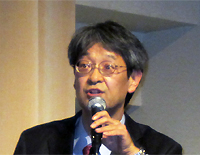"Seeking Compatibility between Economic Growth and Social Justice : Focusing on the Experiences of The New Brazil"
November 18, 2013, (Monday)
United Nations University U Thant International Conference Hall
Organizers: IDE-JETRO, The World Bank, The Asahi Shimbun Company
>>>>Event Guide/Program
Opening Remarks | Keynote Speech | Panel Discussion
Panel Discussion
– Corresponding to the Global Environment and Institutional Reforms –
Kotaro Horisaka (Emeritus Professor of Sophia University)
The current Brazil is the product of 21 years of military rule and 29 years of civilian rule. In addition to the formulation of the Citizen Constitution, important milestones on the path to a democratic government include the referendums that approved the republican and presidential systems. Civilian control of the military has also advanced. As a result of institutional reforms, there is now power sharing between the “legislature, executive and judiciary” and between “the federal government, states governments and municíipio governments (local authorities).” This means it now takes longer to reach any political consensus. Brazil is going through a period of adjustment, but it will still have two major advantages after the adjustment finishes, namely: its socially-integrated society of many different races and cultures; and its spatial integration over land the size of a continent. By achieving these two kinds of integration, Brazil could make even further progress from here on.
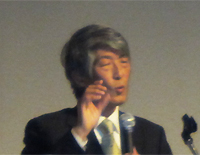
(Emeritus Professor of Sophia University)
Taeko Hoshino (Latin American Studies Group, Area Studies Center, IDE-JETRO)
Since the 1982 debt crisis, Mexico made steps towards establishing itself as a global center for the production and export of industrial products. This involved implementing neo-liberal reforms, signing up to the North America Free Trade Agreement (NAFTA), and signing FTA with several major economic powers. Brazil also implemented neo-liberal reforms, but Mexico has opened its economy more to the outside world as it focuses on its manufacturing sector. A comparison of the current situation in both countries reveals that Mexico is beating Brazil when it comes to GDP per capita based on purchasing power parity. Income distribution has improved in both nations, but Brazil’s Gini coefficient is still higher than Mexico’s. Mexico’s economy is also more dependent on exports than Brazil’s. However, while Brazil exports to a wider range of destinations, 80% of Mexico’s exports are concentrated on the United States. As for types of exports, Brazil gradually increased the proportion of industrial products , but the export focus has subsequently shifted to primary commodities since about 2000. In contrast, Mexico has shifted more in the direction of industrial products.
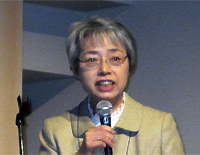
(Latin American Studies Group,
Area Studies Center, IDE-JETRO)
Ryohei Konta (Latin American Studies Group, Area Studies Center, IDE-JETRO)
The “New Brazil” study group was formed during the last fiscal year with the original remit of studying Brazil as an example of a country that has achieved a balance between economic growth and social justice. Today’s symposium is based on this remit. However, the large protest marches that shook Brazil in June were a reminder of the difficulties of balancing economic growth and social justice. The government has improved access to social infrastructure like education and healthcare. In qualitative terms, though, not much has changed, which explains the recent demonstrations. The new constitution adopted some high ideals and Brazil has worked towards creating a social system that includes the previously-excluded poor. There are many deficiencies in the safety net that emerged, though, so discontent is swelling across the population. The demands of the protesters were quite diverse and it seems the government may have opened a “Pandora’s Box.” Social order is deteriorating and the government needs to introduce policies that meet the needs of its citizens. This question, of whether the government can be directed towards serving the needs of the people, will be a major theme of next year’s presidential elections. The 1988 constitution, the basis for the New Brazil, was itself the result of nationwide pro-democracy demonstrations. Depending on what stance the newly-elected government takes next year, in the future we could look back on the recent demonstrations and judge them to have had as much impact as the pro-democracy protests of the 1980s.
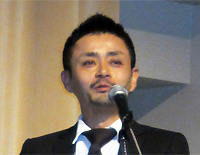
(Latin American Studies Group,
Area Studies Center, IDE-JETRO)
Discussion
(Daisuke Hiratsuka:Moderator) I would like the keynote speakers to talk about two things. Firstly if CCT failed when it was introduced in Asia, why has it worked in Brazil? Secondly, I would like them to discuss the balancing of economic growth and social justice, with a particular focus on the protest marches that occurred in June.
(Canuto) While Brazil may have universal healthcare, conditions at hospitals still leave a lot to be desired. This is a key point: the gap between public demand for social services and the actual provision itself. I have my own personal interpretation of the protest marches. It involves the gleaming FIFA-standard stadiums that filled our TV screens. They stood in stark contrast to our standards of healthcare provision. People began to realize they wanted a similar standard of healthcare. Citizens have also grown aware that their taxes are not being properly utilized because of corruption. However, the demonstrations were not just bad news. They also carried a positive message: they provided an agenda for the government to follow in future and also created pressure for reform. Brazil’s major industries remain very wasteful, but if productivity can be improved, this could well lead to further growth. Compared to discrete manufacturing, a low-added-value sector, there is nothing at all backwards about exporting primary commodities. Brazil’s agricultural sector is quite technologically advanced too, so we shouldn’t ignore this growth just because it involves primary commodities. The public are also calling for public investment to be diverted to higher-priority areas.
You can’t implement CCT unless the country has put together the right systems and conditions. More specifically, for a country to implement CCT, it needs to build a registration system. It also needs: institutions to carry out CCT; an ATM system to enable CCT withdrawals; and a CCT monitoring system. There are many things we can learn from Latin America about how to implement CCT. The system has now spread from Mexico and Brazil to parts of Africa and elsewhere. However, there are many reasons why each country might have difficulties implementing CCT. In addition to the aforementioned institutional problems, there are also cultural factors to consider, such as concerns about relying too much on income transfers.
(Levy) It is difficult to balance economic growth with social justice. Take the bus fare rises that led to the recent demonstrations, for instance. If the rises are not implemented, these losses need to be compensated for elsewhere. My fear is of a vicious circle whereby the government commits itself to meeting the high-level demands of the protestors, then finds itself unable to realize its commitments, thus leading to even more protests. The government should not set its priorities based solely around the demands of the protesters. Though the central government only has so much money to spend, it often prioritizes the wrong policies. The pensionable age in Brazil is quite low. Under the current system, people can take out more than they put in. Furthermore, corruption only accounts for tiny amount of the national budget as a whole. So for me, social security reform is a far more pressing problem.
(Bugarin) For CCT to work, there needs to be some kind of social line drawn. It is important that the policy is aimed at alleviating poverty. Many of Brazil’s new middle classes still rely on the government for their income (in other words, the income structure is a bell-shaped curve strongly tilted towards those at the bottom of society). For me, the key fact is the creation of this new middle class. In Brazilian elections, voting is compulsory, so many poor and middle-class people have now emerged as political actors. It is good that the protests have given citizens a voice. They have told the government their demands and sent out a clear message: “we are watching you!” This will lead to new changes and a further step down the path to reform.
(Daisuke Hiratsuka:Moderator) I would like the panel reporters to make a few comments about this discussion.
(Kotaro Horisaka) From an historical perspective, it is important for Brazil to focus exactly on where it is trying to go from here. It has already managed to implement a number of structural reforms. It should use these as a base for the upcoming period of adjustment, when it will need to develop mechanisms for reaching a consensus. Brazil has chosen democratization and a market economy as the means to knit together this giant country. It is also developing a new national strength; its own people. From here on, Brazil will need to push forward with infrastructure development and so on as it seeks to realize social and spatcial integration.
(Taeko Hoshino) Though Mexico is a pessimistic country, Brazil is bursting with optimism. However, today’s discussion has revealed glimpses of a more realistic Brazil.
(Ryohei Konta) Radical groups still continue to demonstrate in Brazil. Next year’s presidential election will be interesting to watch; it could prove to be an important turning point that shapes Brazil’s direction from here on.
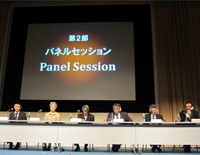
Panel Summary – Closing Remarks
Daisuke Hiratsuka (Executive Vice President, JETRO)
Unless the basic conditions are in place, CCT will not produce results. In other words, the program needs the right governance and actors. We wanted to talk more deeply about Latin American industries and firms, but that theme will have to wait for next time. From here on, the IDE-JETRO will continue working to disseminate the results of workshops in this way as we seek to provide the public with valuable information.
